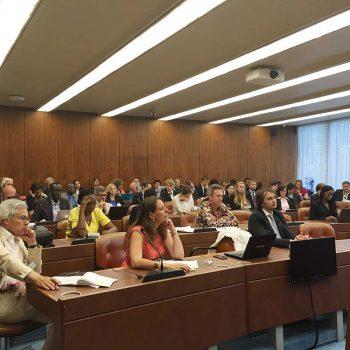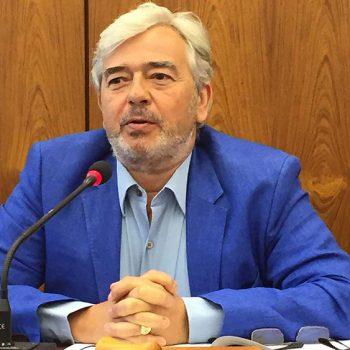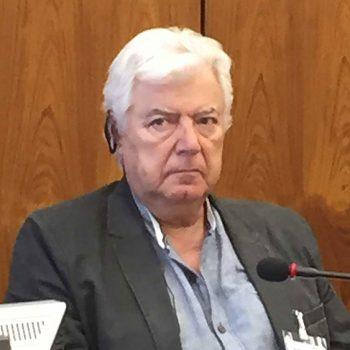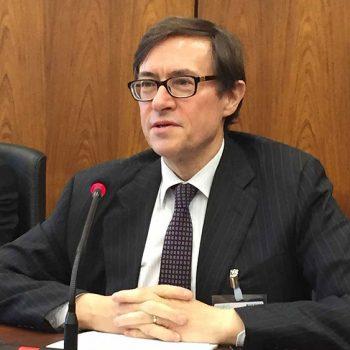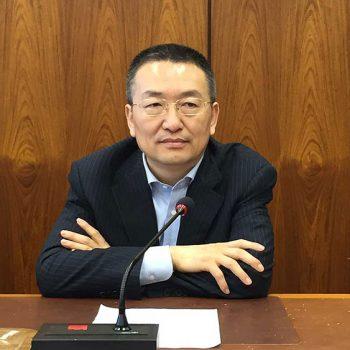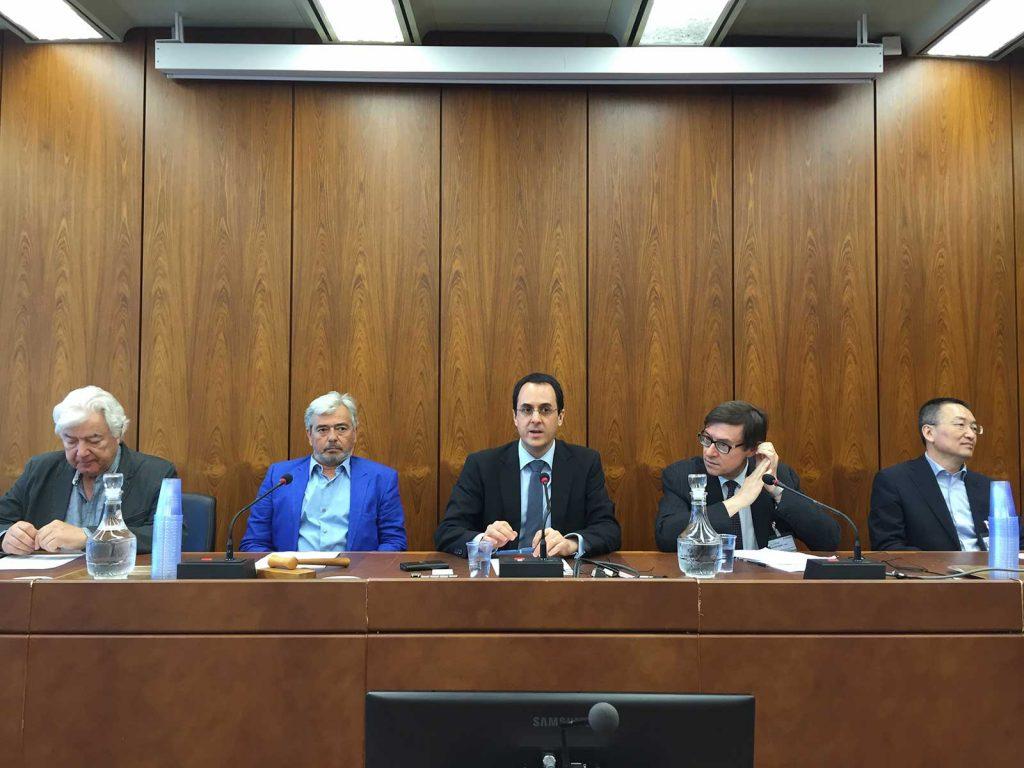
New Academic Study Proposes a Framework for a New Treaty on the Visual Artists Resale Right
Author Sam Ricketson Joined by Renown Visual Artists José de Guimarães and Hervé Di Rosa in Launching the Study at WIPO in Geneva
Geneva, Switzerland – 1st July 2015: In Geneva yesterday, copyright law specialists from around the world gathered at the World Intellectual Property Organisation (WIPO) for a presentation of a new academic study on the Artist’s Resale Right. Hosted by CISAC, GESAC (Groupement Européen des Sociétés d’Auteurs et Compositeurs) and EVA (European Visual Artists), the event included a presentation of the study’s key findings by its author, Professor Sam Ricketson, a speech from a representative of the Chinese government, Director General, Mr. Yu Cike (Copyright Management Department of National Copyright Administration of China) and a panel with two internationally renown visual artists, Hervé Di Rosa and José de Guimarães.
The Artist’s Resale Right ensures creators a small percentage of the resale price when their artworks are resold by an auction or in a gallery. Adopted by more than 80 states around the world, the right is not currently recognized by the world’s two largest art markets, China and the USA, both of which are now considering its adoption.
In the afternoon prior to the event, a delegation made up of CISAC Director General, Gadi Oron; SACD Director General, Marie-Anne Ferry-Fall; French visual artist, Hervé Di Rosa and law professor Sam Ricketson, was received by WIPO Director General, Françis Gurry. They presented the study and discussed the importance of Resale Right for visual artists.
A few hours later, the presentation began with an introduction from Mr Oron who highlighted the need for a new international framework on the resale right. Next spoke Mr Yu, who gave an overview of the developing copyright situation in China today. Having worked on the pending copyright legislation in China, Mr Yu informed delegates that the Chinese government supports the introduction of the resale right for visual artists under the new law.
Sam Ricketson then presented the key findings of his study. A professor at Melbourne Law School, he has written and taught widely in all areas of IP law and was a consultant to the Australian Law Reform Commission.
“This goes some distance towards correcting the imbalance that otherwise exists between the rights of visual artists and those enjoyed by other categories of authors,” said Mr Ricketson. “Global adoption would also redress the disparities that creators face when their works are sold in countries that do not recognize the resale right.”
In addition to laying out the arguments in favour of introducing a new treaty on the resale right, Professor Ricketson also outlined the international legal protection currently in place and provided a framework for a new international treaty.
The floor was then turned over to two renowned visual artists and the first to speak was José de Guimarães. One of Portugal’s most awarded creators and active member of the Portuguese Society of Authors (SPA), his work is exhibited in museums all across Europe, USA, Brazil, Canada, Israel and Japan.
Referencing a recent $1bn visual art sale in the US, Mr. de Guimarães asked:
“Do we believe that those who will spend a billion dollars to buy works, often for speculative purposes, could not afford a small percentage to be paid to creators?”
He also shared the news that the petition to make the resale right a universal law through an international treaty has to date gathered more than 15,000 signatures. “We are not alone” he concluded.
The final speaker was Hervé Di Rosa. A French visual artist recognized as one of the founders of the “Free Figuration” movement, Mr. Di Rosa is also Vice-President of the French visual arts society ADAGP and Chair of the International Council of Creators of Graphic, Plastic and Photographic Arts (CIAGP).
Mr. Di Rosa focused on the equality that this right brought to visual creators and stressed its simplicity and effectiveness. He explained how an artist justly benefiting from a sale in one territory but being denied this right in another is entirely contradictory to the realities of the global art market that exists today. He closed with a call to arms for his fellow creators.
“As artists, we have a duty to fight for this just and necessary cause,” he said. “It helps to guarantee that any living artist or their descendants may share in the proceeds from the resale of their works and provides essential investment into our culture.”
For more background into the campaign, the Artist’s Resale Right brochure is available in English, French, Spanish and Chinese.
